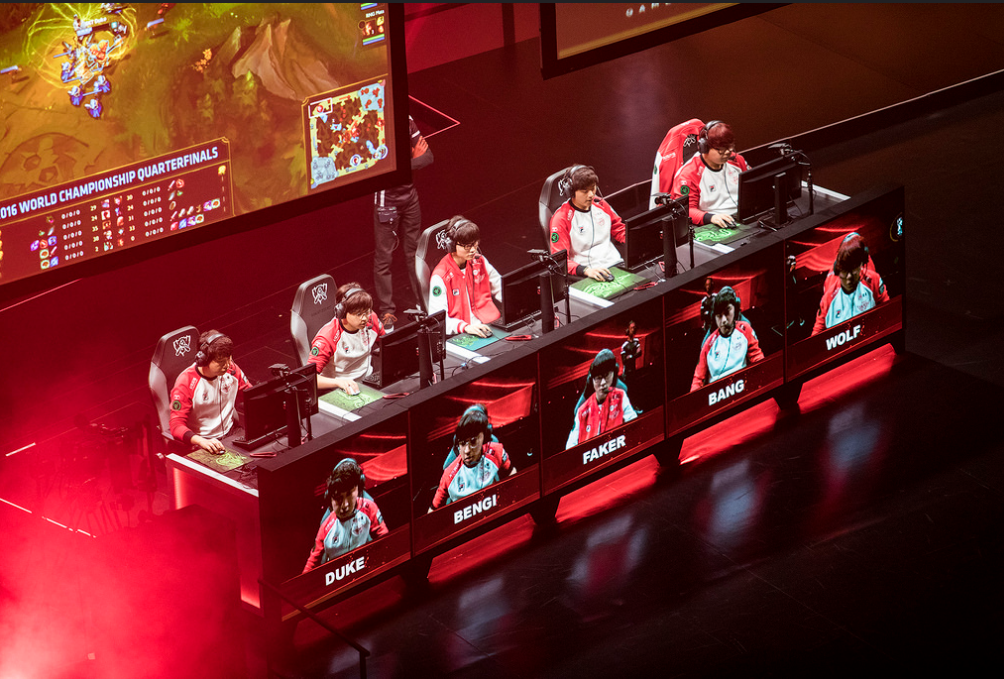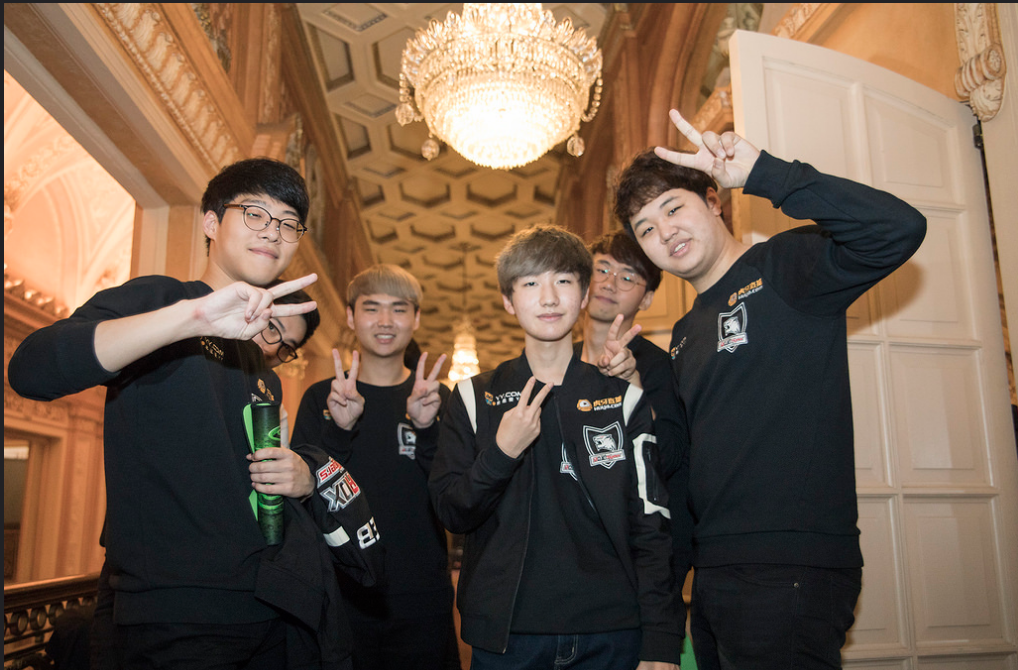Korea's League of Legends dominance shouldn't stop the West from enjoying it
If you can’t beat ‘em, join ‘em.

If you’ve been following the dialogue surrounding League of Legends, you’ve probably heard about the gap. The gap is, depending on who you ask, a giant chasm that is expanding, rapidly closing, or exactly as wide as ever.
Let’s take a step back: the gap is considered the difference in results between the dominant Korean regions, and the Western LCS. While this includes both NA and EU as regions, we’re going to focus on North America for the purposes of this article. Korean teams have claimed the last few World Championships, and are primed to take this one as well, while the West struggles to reach near that level of play. This has caused a lot of frustration, but as the dialogue stretches on it becomes necessary to examine the situation from new angles. There’s another side to the conversation about the gap that we’re missing out on entirely: What can be done to get North Americans enjoying Korean teams as much as their own (or at least enough to still like watching League)?
Recap and results
Let’s look at the situation frankly. The last three World Championships have been won by Korean teams—two of them by the same team, in fact: SK Telecom T1. A Western team hasn’t won since Fnatic, way back in Season One. The total list is: Fnatic, TPA, SK Telecom T1, Samsung White, and SK Telecom T1. Unless H2K pull out an unprecedented miracle, the next name on that list will also be a Korean team.
This year, European champions G2 Esports washed out with only a single win under their belt. Second seed Splyce also fell out of Groups after their first international showing after facing relegations. North American teams fared better, with each team going 3-3 during Groups. Cloud9 managed to make it out of Groups thanks to tiebreaker results, but was quickly knocked out by Samsung Galaxy. For context, this is an improvement over 2015, where North America was unable to score any wins during the second week of Groups. So, why is this so discouraging? NA had been its most competitive ever. TSM had especially dedicated itself to improving with a grueling training schedule. Stepping on the world stage was meant to be a vindication, but instead it was a slow step forward.

Outcry and accusations
When TSM failed to make it out of Groups, fans and analysts alike began the autopsy report. What had happened, and who was to blame? There have been dozens of excellent pieces written on what the gap is caused by. Some of the common offenders that are brought up in these pieces include:
- A “communication” gap caused by Korean players playing on teams with native NA players.
- TSM has been playing on an intense schedule for one split, and it’ll take time to catch up.
- There need to be more international events to allow teams to grow and evolve outside of their region.
- The grueling schedule of both spring and summer split causing burnouts among players.
While analysts and experts are offering a civil response, some North American fans are furious: Why even bother watching the rest of Worlds? A few take it a step further: Why even bother engaging with esports at all? This was meant to be TSM’s year, and they failed. Why bother if the gap will never close? Is it worth the heartbreak?
While people are discussing the causes (some civilly and others furiously), one thing is certain: It’ll take some time for the West to be able to compete on an equal level. This leads us to the next problem, which is:

Engaging and inspiring
It says something if a TSM fan is only watching the World finals for North America, and loses all interest in the rest of the finals. If a tournament does its job right, the final brackets should be filled with the highest level of play. League of Legends fans should be excited to tune in and see some quality League of Legends. They’re not, and that’s interesting. It’s not like there aren’t compelling stories to be had in the semifinals and eventual finals: the ROX Tigers against SKT, the possibility for a third World Championship for SKT, H2K’s final stand for all of the West, Samsung Galaxy evolving from an underestimated third seed into a top four team... All of these are exciting, interesting, and engaging stories I’m eager to tune in for.
Keep up to date with the most important stories and the best deals, as picked by the PC Gamer team.
There’s a popular theory that Starcraft lost North American interest due to the winners continuously being Korean, but as esports historian Thorin points out, this has never been proven in any conclusive manner. I frankly think it seriously underestimates the League player base to think that they are unable to sympathize with or relate to a foreign team. So how does Riot Games retain their interest in a continuing era of Korean dominance until NA finally steps up to their level?

Part of the problem is that watching the NA (or EU) LCS and the LCK is exhausting for most viewers, or tough because of time zones. Another issue is that the relatively rare international competitions make the Korean teams somewhat of strangers to the North American fan base. Add in the fact that the Korean narratives are often simplified down to “Korea always wins, the end,” and the problem becomes more clear.
While people bring up the gap again and again—and likely will up until the day NA wins their second Worlds championship—we still have a long way to go with closing the chasm between the regions. In the meantime, it’s worth considering the other side to the problem: how can we get players to get (and remain) interested in our Korean overlords?
To be clear, there’s absolutely nothing wrong with being invested in a local team or being a diehard fan until the end. However, it seems odd how easily we accept that a huge portion of the fanbase is just completely uninterested in the world’s best teams. Imagine how much excitement we could be building up for the final games, instead of mourning the fact that three Korean teams are in the top four. By focusing on the failures of the West, we’re missing out on some of the best stories in esports right now. It’s odd that we allow these tales to fall through the cracks just so we can go over why TSM didn’t make it again and again.
As I tune into root for the ROX Tigers this weekend, one saying comes to mind: If you can’t beat ‘em, join ‘em.

